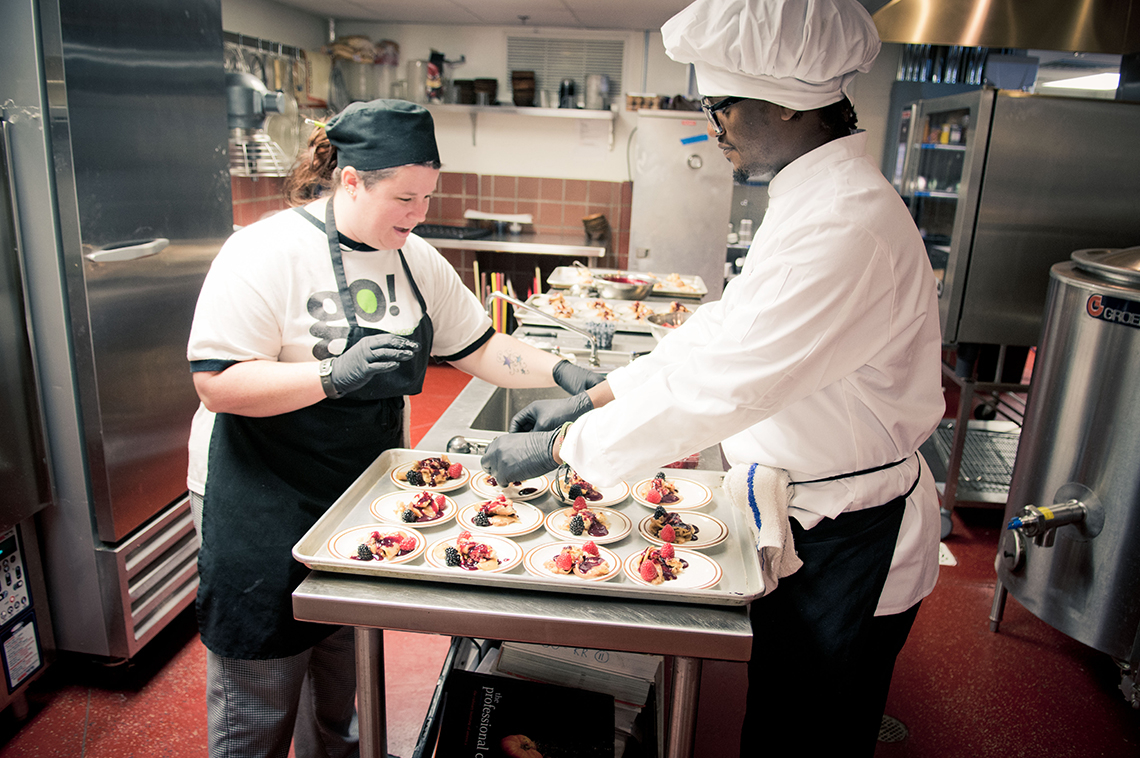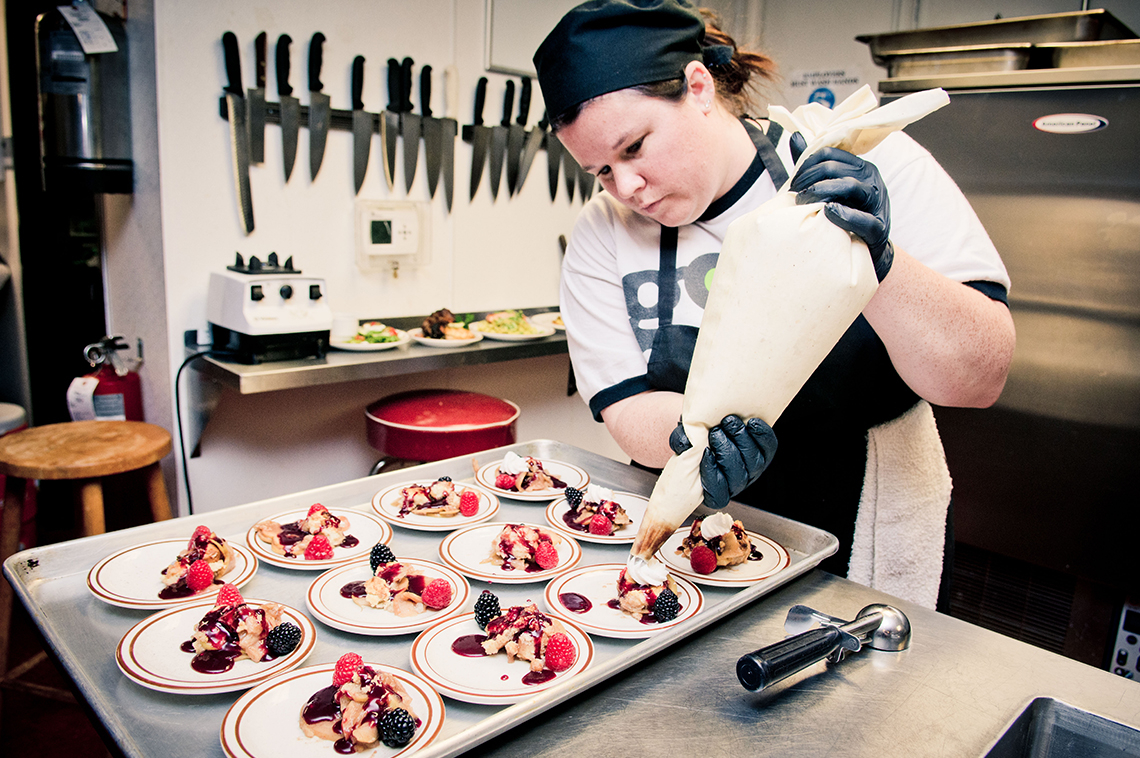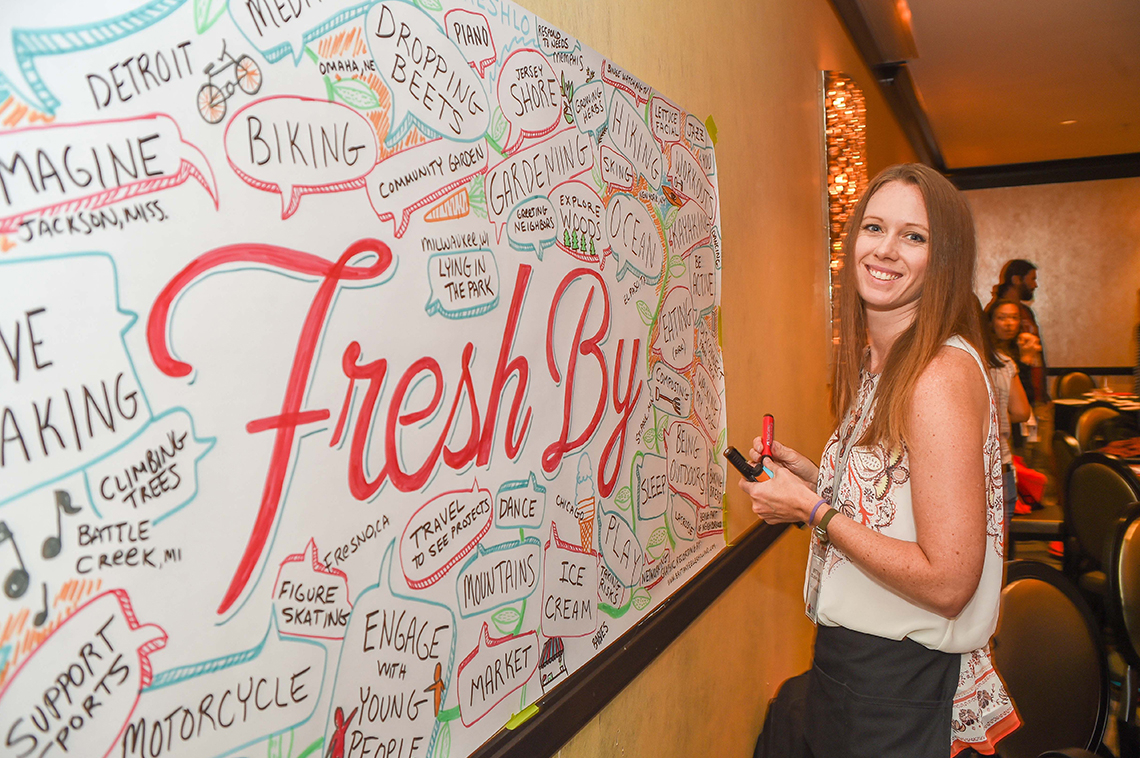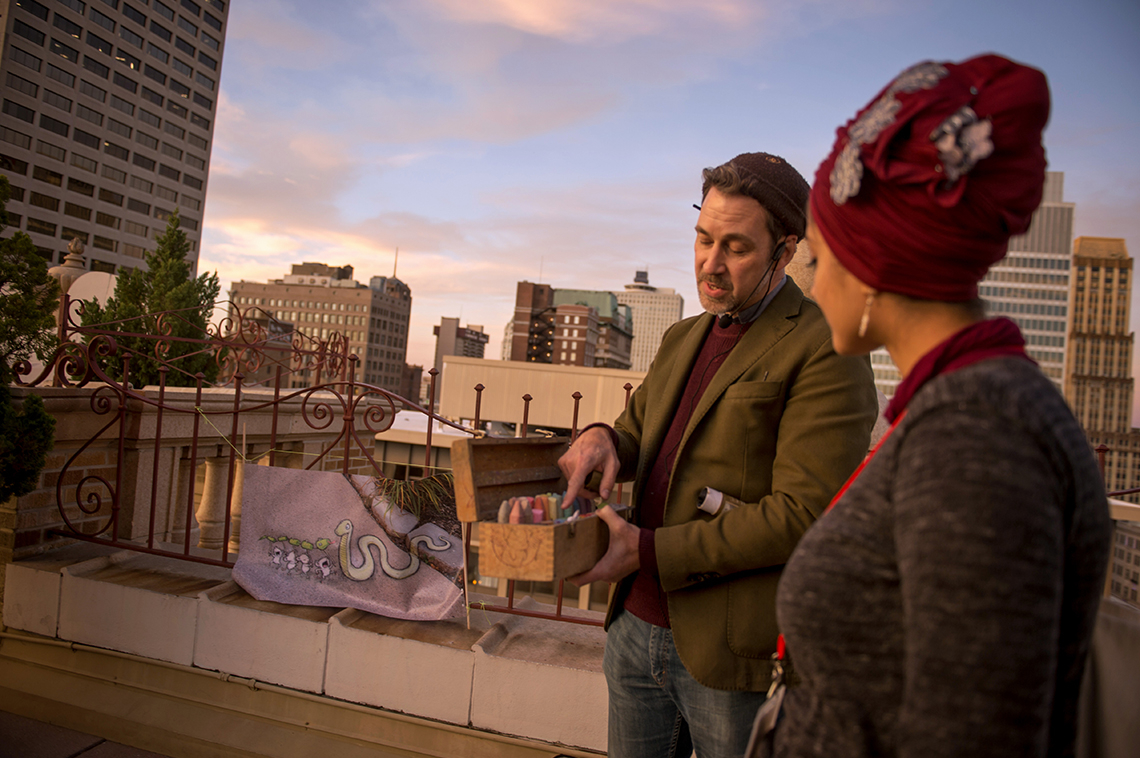



Over the past 18 months, two Kresge Foundation teams have been working with neighborhood-based coalitions to ensure that residents have access to healthy foods and economic opportunity. We’re tackling this through an $11 million-dollar initiative Fresh, Local and Equitable – or as we call it, “FreshLo.” FreshLo envisions strengthening low-income communities by integrating Creative Placemaking and food-oriented development.
Across the field, funders are increasingly thinking of their work in cross-disciplinary ways. At Kresge, we recognize that communities don’t work in silos, so we probably shouldn’t either. This new approach has presented both challenges, opportunities and pleasant surprises. We’re learning that positive social change, doesn’t just happen within one silo or discipline. The most impactful community development requires a multi-layered approach. Members of both our Arts & Culture and Health Programs have seen the impact on communities when residents combine food-oriented development with cultural expression or Creative Placemaking.
We realized that funding opportunities didn’t always align with how communities are working and thought that this approach could have an enormous impact if a funder dedicated significant resources towards these projects and to help community organizers engage artists in community development. Through FreshLo, we merged the strengths of both programs into a set of comprehensive goals designed to:
- Generate examples of how food contributes to health, Creative Placemaking and revitalization
- Strengthen cultural expression within communities
- Expand the number of practitioners adopting comprehensive approaches to food-oriented development
- Network FreshLo grantees into a community of practice
- Influence the food systems field.
We hosted an open call for proposals from neighborhood-based organizations with an idea for increasing access to healthy food that would include residents’ voice, engage artists, utilize Creative Placemaking and ultimately, result in equitable outcomes. We’d never offered this type of RFP. We thought we might get 50 proposals. We were overwhelmed when we received more than 500. We were also surprised to learn that many more communities than we expected were already working this way.
After reviewing proposals tackling some of the most pressing issues of our time through food and creativity, we funded 26 organizations as part of our first cohort. These organizations received $75,000 grants to participate in a planning process to develop creative, cross-sector visions of neighborhood-based, food-oriented development projects. We became the first national funder to intentionally and equitably integrate food, creativity and community to drive neighborhood revitalization at this scale.
We’ve finished our planning year and have just awarded a round of implementation grants so that communities can make their visions a reality. FreshLo planning grants have resulted in a variety of projects on the ground including incubator kitchens to launch small businesses, public markets and retail space for residents, plans to increase fruits and vegetables in institutions such as schools and hospitals, entrepreneurship training and programs to build neighborhood identity creatively through food.
The infusion of Arts, Culture and creativity into the FreshLo approach is an essential part of our grantees’ success in three ways:
1. Food is an essential link to cultural expression.
Not only does eating an abundance of fresh fruits and vegetables keep us healthy, but the foods we eat and how we prepare them can connect us to our family, friends, neighbors and the heritage and culture of a community. By preparing and sharing a meal, we can deepen our relationships and reknit the social fabric of our communities.
We’ve seen many of our grantees doing incredible work that strengthens community identity through food and food-based business. For example, in St. Paul, Dream of Wild Health is increasing access to Native American foods and in Memphis, Binghamton Community Development Corporation is supporting immigrant and refugee communities to start businesses based on the techniques and cuisines of their country of origin.
2. Embedding artists in comprehensive community development approaches creates energy.
Engaging artists in community development brings forth new ideas, new approaches and strengthens social cohesion. Because not everyone communicates in the same way, creative thinkers and culture bearers can inspire others in the community to share and express themselves in ways that a traditional community meeting can’t. For example, in Providence, artists facilitators led the planning process and engaged residents to better understand community aspirations. The resulting project, Sowing Place, is designed to be more than just a new indoor market. Sowing Place will allow city agencies and community-based organizations to work together to create economic opportunity for residents and strengthen the vitality of their neighborhoods.
3. Comprehensive community development can go further with Creative Placemaking.
Creative Placemaking is an approach to community development and planning that intentionally embeds arts, culture and community-engaged design. We encourage our partners and grantees to embed Creative Placemaking principles to influence the systems and practices that expand opportunities for low-income people in disinvested communities in America’s cities. When communities utilize Creative Placemaking, they develop sound strategies for community revitalization that result in equitable, healthy places for residents to live.
Implementing comprehensive community development strategies isn’t easy which is why we’re pairing our grantees with multiple opportunities for technical assistance and to learn with and from their cohort. However, the results of this approach speak volumes, as we have seen the cohort generate positive outcomes through the planning process. We have learned so much this past year from our community partners and have made several course corrections along the way. We look forward to continuing this initiative with Creative Placemaking as a core element with our cohort, and to deepen their understanding of this approach.
Stacey Barbas is a senior program officer on The Kresge Foundation's Health Program and is the team lead for the Fresh, Local and Equitable initiative. In addition to her work at Kresge, Stacey also serves on the steering committee of the Sustainable Agriculture and Food Systems Funders.
To learn more about the initiative, please visit Kresge.org/freshlo.





